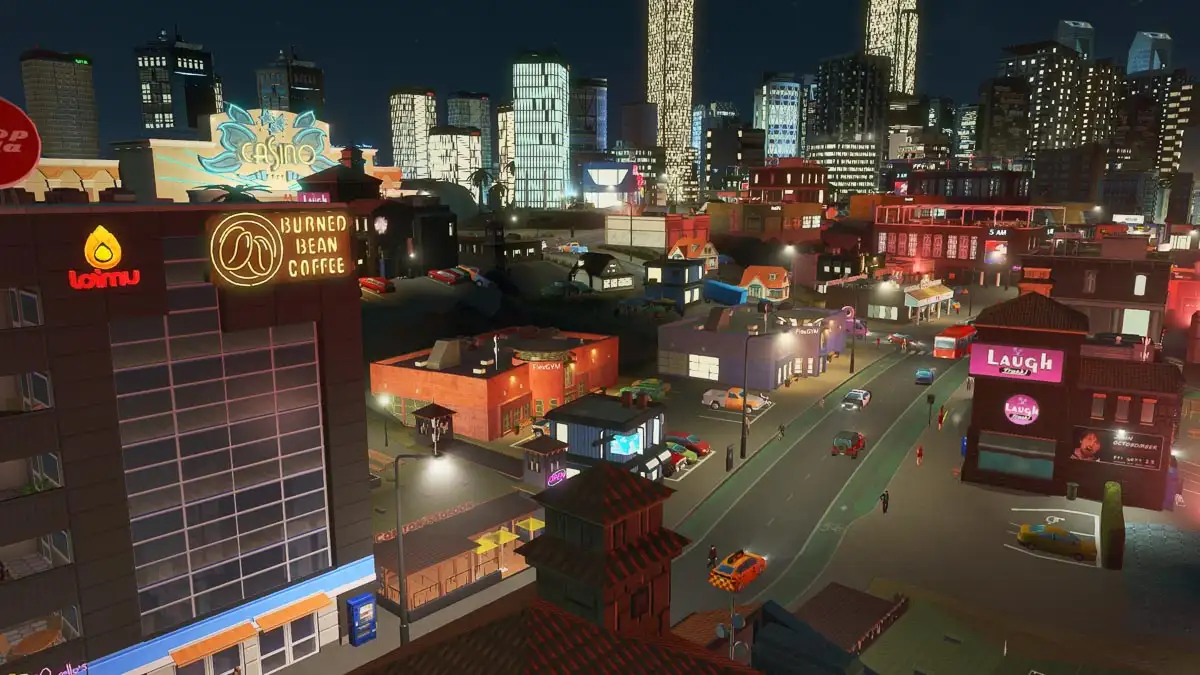
After Dark was the first expansion for Cities: Skylines, and dropped in late 2015.
So why write about it now? Well, I’m building what I hope will be a really useful resource for C:S, especially for people who, like me, are getting into the game late. I think it’s especially useful to look at expansions after six of them because now we know how the game has changed - and how everything fits in. Also, with so much DLC, people often look to prioritise what extras to buy.
So with that said, let’s get into it.
What’s the big story?
Visually, the most striking addition in After Dark is the day/night cycle. Before that, Cities: Skylines played out entirely during the day. If you’ve played the game for a few hours you’ll notice that even without After Dark, you still enjoy those beautiful sunsets and atmospheric nights. That stuff got released for free alongside.
The free content included night - obviously - but also adjusted activity throughout the day. Shorelines and canals add adjacent land value, helping you create expensive waterfront developments. Economy and crime got reworks, and 70 new buildings were added for even more variety. That means even with the base game, you’ve already got that stuff.
The daily cycle changes the rhythm of the game, with slower traffic at night and some areas, like your industry, working below full capacity. Crime goes up at night, as does activity in your leisure commercial areas. The game also got separate budget sliders for day and night.
Tourism and Leisure commercial specialisations
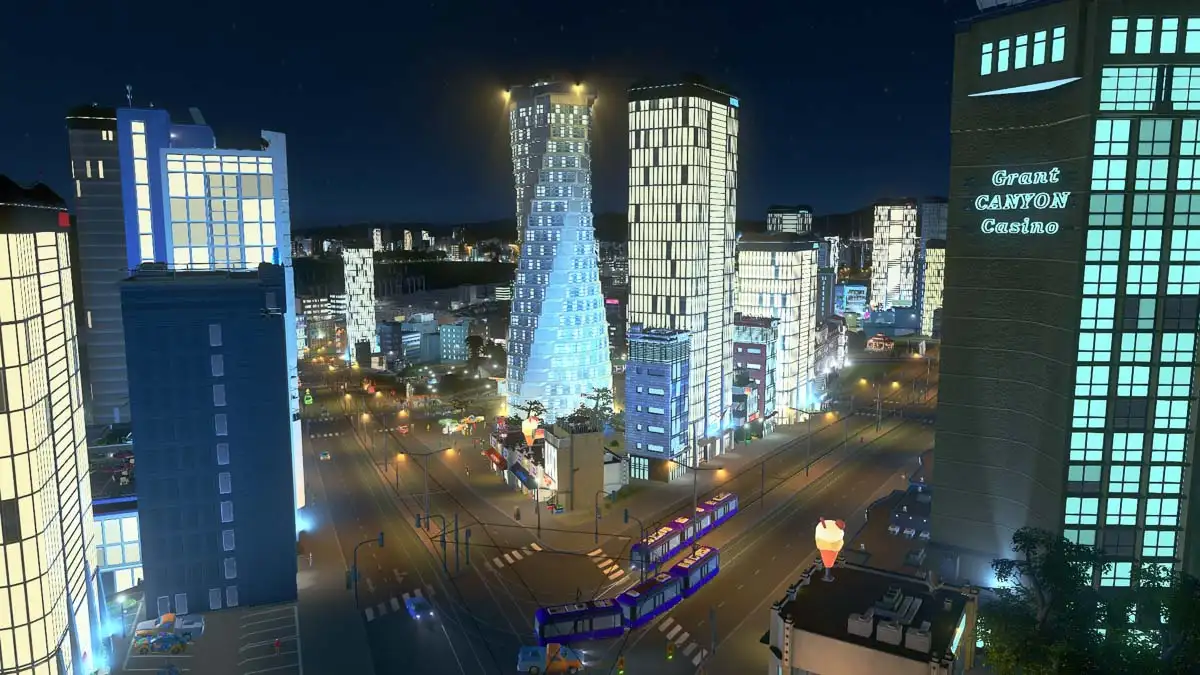
For me, the big hitter in the paid content is the new commercial district specialisations. Just like industry, you can draw a district then specify that all commercial in the area develops for Tourism or Leisure.
Tourism creates high-rise hotels, souvenir shops, restaurants, and the like. Leisure turns whole districts into rowdy bars, nightclubs, arcades, salons and cafes. Put them on the waterfront and you’ll get things like open-air gyms. It’s a nice touch.
Both specialisations - like industrial specialisations - have only a single level and can’t upgrade. They make a lot of noise so putting them next to residential areas is a no-go. In return, they pay more taxes and attract tourists to the city.
The new commercial zones add enormously to the game. By choosing between generic, tourism or leisure, each district can become visually and functionally distinct, and give you the tools to build a more convincing city.
Build a dingy resort along the waterfront or fill your city centre with towering hotels to cater to the tourists pouring out of your central station. It really gives cities flavour and a much clearer identity. They also gain a kind of story that’s lacking without the tools to expand beyond generic commercial areas.
I love building cities for tourism my tourism guide and After Dark makes major contributions to that, both mechanically and visually.
Transport hubs and public transport options
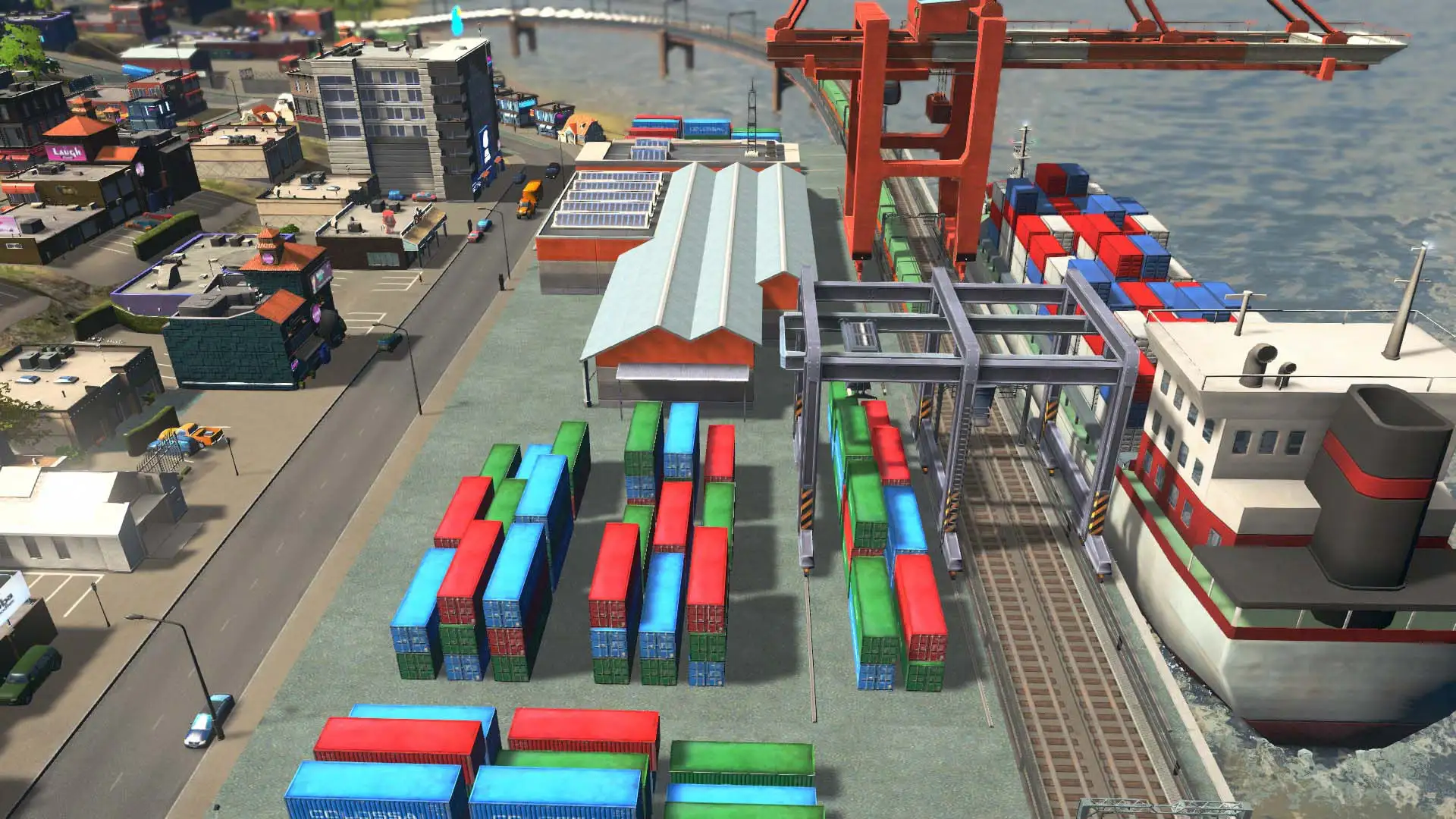
After Dark began introducing hubs to the game - by which I mean integrated transport buildings. Hubs are some of my favourite things in the game. They’re just so satisfying.
Here, you get the cargo hub, which combines a Cargo Harbor and Cargo Train Terminal. It avoids local congestion from shuttling cargo between the Harbor and Terminal. The second is the International Airport, which has two runways and much higher capacity. It includes a Metro Station underneath, making for seamless travel into the city. Both are expensive and only necessary for major cities, but nice when you get there.
I don’t get tons of use out of the bus terminal. I tend to run buses on smaller, more local routes, so they don’t pass through one single area. I’ll normally run trams linking buses to trains or metro lines - but if you don’t have Snowfall (and therefore trams) the Bus Terminal is brilliant. It means you can get passengers to seamlessly switch lines without causing congestion from buses queuing to use the same stops.
Taxis are a whole new type of semi-autonomous transport. Put down a depot then stick taxi ranks around the place, especially in tourist areas, to give your visitors another option to get to their destination. According to the devs, this encourages tourists to stay in the city longer - therefore spending more money.
Parks, plazas and unique buildings
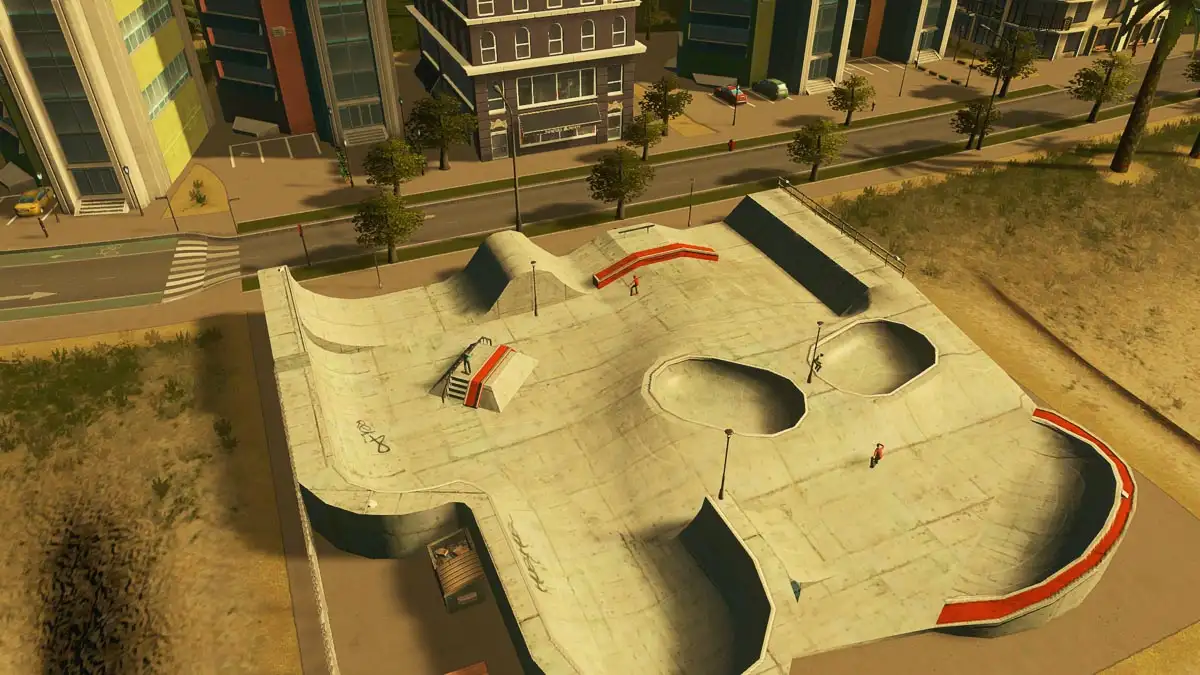
There’s a handful of new unique buildings including the casino (which makes a great centrepiece for your leisure area), a gigantic hotel and driving range. You also get a prison, adding lots of holding cell capacity to stop your police stations getting full.
You get a whole new set of waterfront buildings including Jet Ski Rental, Restaurant Pier and Volleyball Court. There’s also a nice Riding Stable. All of them act like parks - attracting visitors and tourists and giving the area a happiness and land value boost.
Talking of parks, the Skatepark is my favourite. It’s really versatile - aesthetically it fits in almost anywhere and functionally it’s great. It’s well-priced with low upkeep, wide effect radius and a small footprint. It’s really, really good!
Cycling and bike paths, and bus lanes
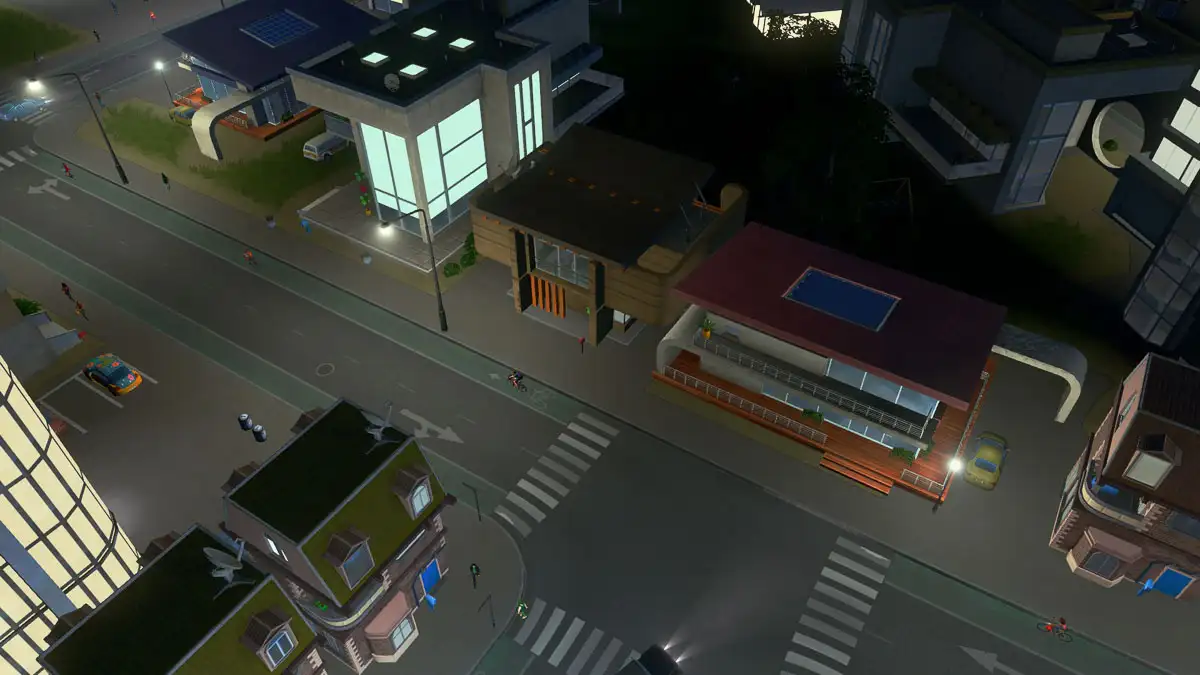
After Dark also added a major new type of transport - cycling. Cims can suddenly hop onto a bike and travel a lot further than they could on foot. The expansion also adds several road types with bike lanes and specific bike paths. It’s not a feature that’s shouted about enough, but for traffic reduction and variety, it’s massive.
You also get new roads with dedicated bus lanes, which give priority to your public transport. The new roads look good and add variety, but they’re also functional and keep things moving. They’re nice in your sort of transition areas: the bits of the network between quiet residential and busier commercial districts.
New city policies
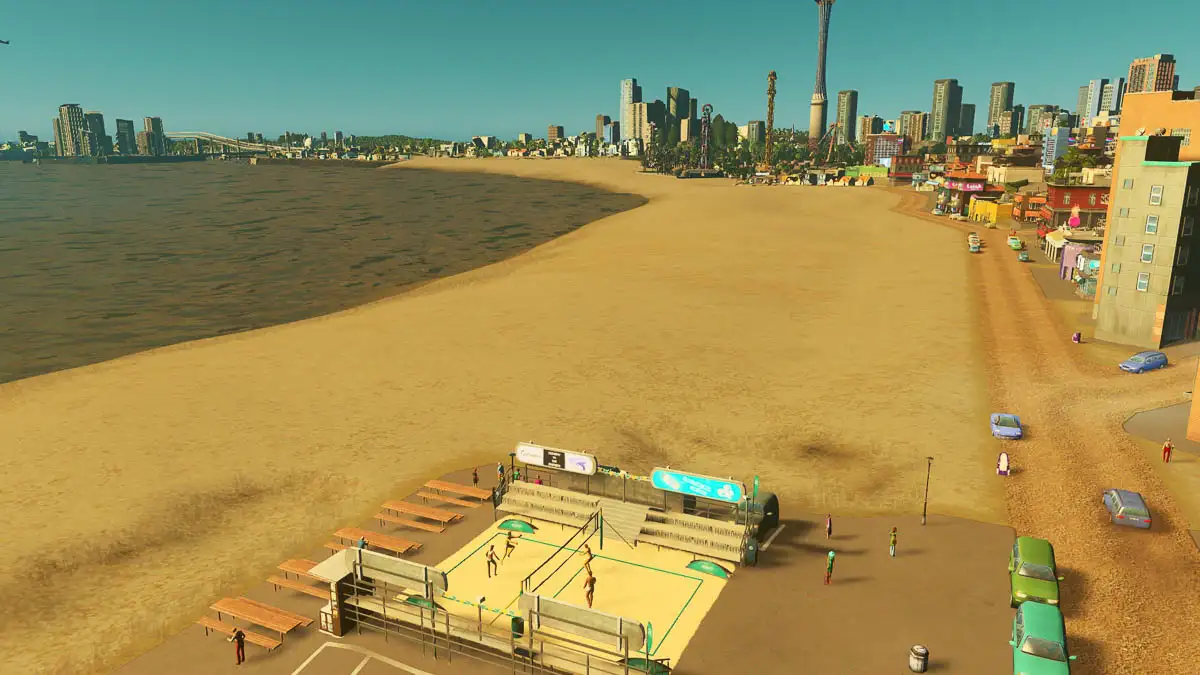
There’s some great new policies here too. The big one is Old Town. This is basically Heavy Traffic Ban but for private vehicles. You can use it to stop tourists driving into your city centre but also stop commuter traffic passing through residential areas.
You also get Encourage Biking to go with your newly added bike lanes. There’s no obvious downside - except perhaps that cims won’t drive but they won’t buy tickets for your buses either, I guess.
Let Go of Leisure forfeits all taxes from Leisure-specialised commercial areas in exchange for a big boost to attractiveness and entertainment values. Schools Out is handy if you’ve got the full range of job types in the city. You can avoid problems filling jobs in specialised industry, for example, by having cims leaving school without going to university and heading straight to work.
How Colossal Order handle Cities: Skylines expansions
It’s worth talking about how the game’s devs (and publisher Paradox - see Crusader Kings II, etc) handle expansions for this game. So far, they’ve put out major DLC roughly every six months. Each expansion has added a ton of new assets and things to play with and has been released side-by-side with a major patch. So anyway, the upshot is that some important expansion features actually got released for free, meaning the core game without DLC has had three years of updates and is even better than at launch.
After Dark: is it worth it?
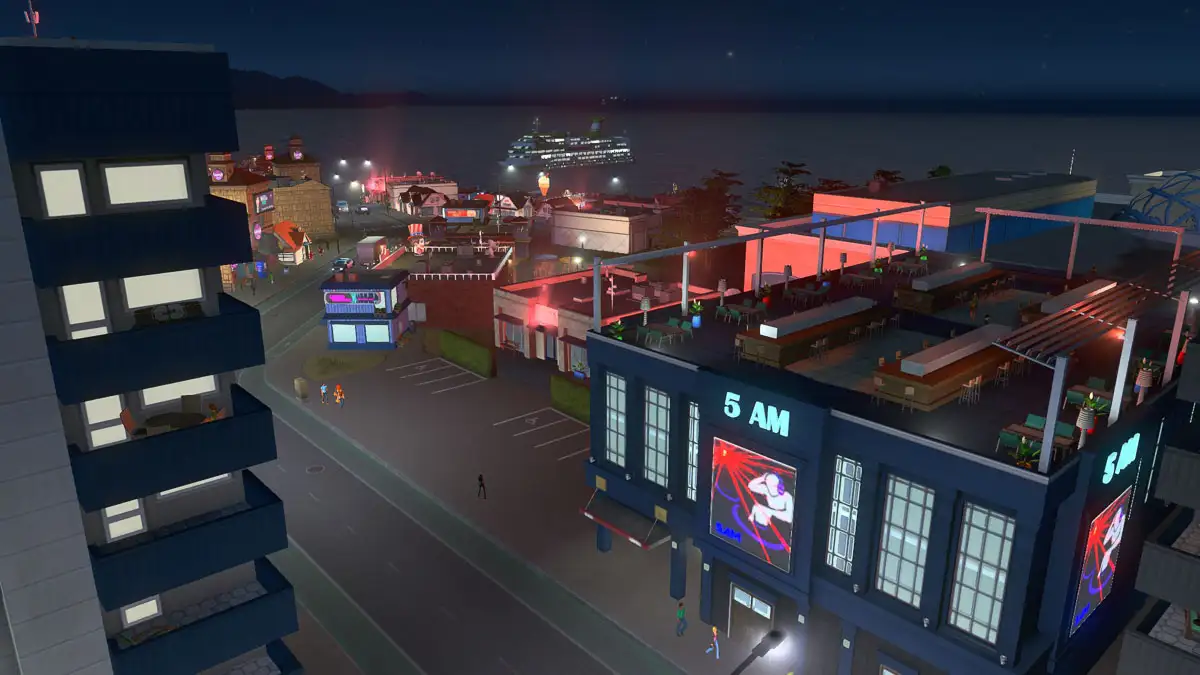
For me, After Dark is a must-have expansion.
The variety you get in commercial areas - functionally and visually - adds diversity to your city and real character to different parts of your city. It gives the place a better sense of story. Those gleaming - often characterless - hotels and areas of seedy nightlife make my town feel like a city.
As someone who loves building cities around tourism my tourism guide, that makes it worth it. The addition of biking and associated infrastructure isn’t often highlighted as a central feature - but it’s massive. You can take a lot of cars off the road and also create modern, low-impact cities more easily. There’s also helpful policies and a couple of situational but efficient hub buildings.
Whether that’s enough for you will depend on your playstyle. What I love about the paid/free expansion format is that the vanilla game gets the most important engine updates automatically. That means pick up the game in 2018 and you’ll find a well-rounded and fully-featured city builder. The expansions add new ways to play, and not fixes.
If you end up buying After Dark and found this review useful, you can support the site and help keep me writing by using one of these affiliate links: Humble Bundle, Fanatical. Thanks so much!